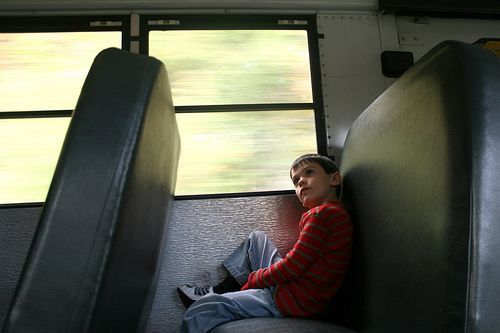Long-Term Anxiety In Children Persists In More Than Half Of Kids Treated: What Is Science Missing?

Being able to identify the symptoms of anxiety in youth patients is one of the chief concerns for mental health professionals. While some diagnoses may be false positives, as critics assert, a new study from Johns Hopkins University suggests the treatment that’s currently being offered still falls short of the target, as the treatment for anxiety in children showed long-term relief less than half the time.
Researchers expressed concern over their findings. Despite nearly half enjoying long-term relief from the condition, what troubled the team was the other cohort — all the kids for whom the mix of medication and cognitive-behavioral therapy showed insignificant, if any, results. A number of traits predicted the relief more than others, and it’s these qualities the team hopes further research can better understand.
Involving 288 patients, aged 11 to 26, the study lasted an average of six years. Participants either received medication, cognitive-behavioral therapy, or a combination of the two. Even with the near half of positive outcomes, the team found that 70 percent of subjects required intermittent mental health care following their initial treatment. Lead investigator Dr. Golda Ginsburg, psychologist and professor of psychiatry, said in a statement the finding underscores the importance of continued watchfulness. "Just because a child responds well to treatment early on, doesn't mean our work is done and we can lower our guard,” she said.
Luckily for subjects who saw improvements in their disorders, the type of treatments they received did not predict the risk of relapse. Given the prevalence of anxiety disorders — 25.1 percent of kids aged 13 to 18 will be diagnosed, according to the National Institute of Mental Health — being able to correctly identify who is most at risk grows increasingly more urgent.
Family dynamics and gender showed the greatest predictions for children with anxiety disorders, the team found. Families whose primary interactions involved quality time, with parents that set clear ground rules and sought to create feelings of trust within members of the family, showed the highest rates of children enjoying long-term relief. Meanwhile, girls were nearly twice as likely as boys to retain their diagnosis at the study’s end, irrespective of their family dynamics. This suggested to the team a mix of both social and cultural forces along with help from biological and hormonal factors.
In the future, Ginsburg and her colleagues argue, research should focus on these differences. Why, for instance, do girls respond worse to treatment than boys do? Such a question may be answered with the increased pressure assigned to girls’ physical appearance in Western culture compared to boys’, upholding a social influence; or it could be the case female hormones interact with chemicals in the brain in such a way that testosterone simply doesn’t.
“Our findings are encouraging in that nearly half of these children achieved significant improvement and were disease-free an average of six years after treatment,” Ginsburg conceded, “but at the same time we ought to look at the other half who didn't fare so well and figure out how we can do better.”
Source: Ginsburg G, Becker E, Keeton C. Naturalistic Follow-up of Youths Treated for Pediatric Anxiety Disorders. JAMA Psychiatry. 2014.



























